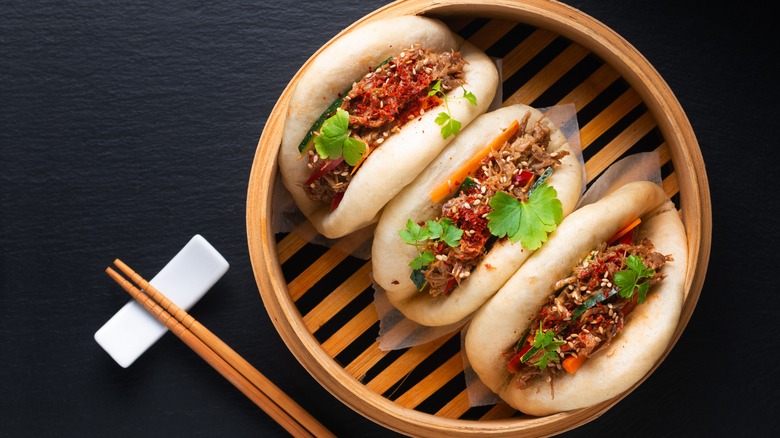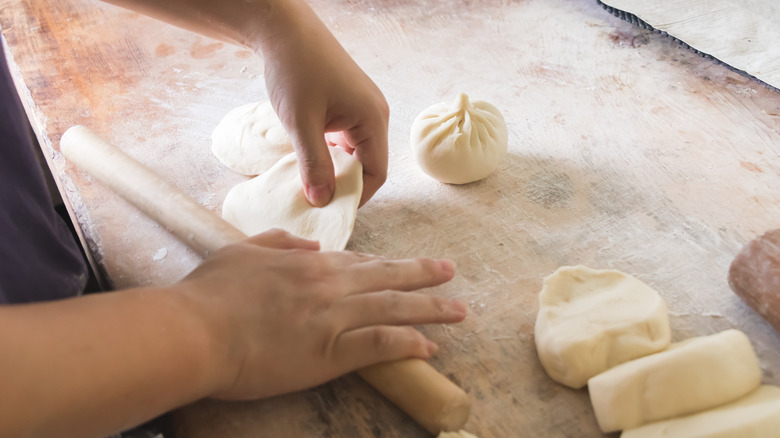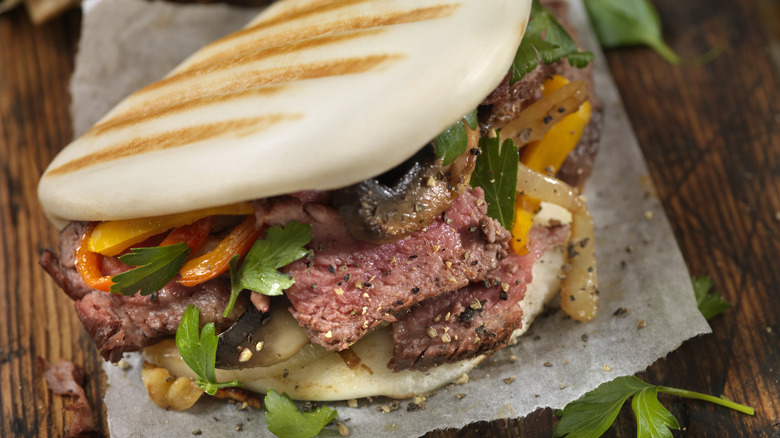Customize Your Bao Buns' Flavor And Texture With Different Types Of Flour
One of the most customizable handheld foods in the culinary world is the bao bun, an East Asian steamed delicacy that has been around for centuries, and is best known for its pillowy texture. Since they are usually stuffed with a wide variety of sweet or savory fillings, there is ample room for experimenting with flavors. However, if you wish to really alter the taste and texture, you should also start experimenting with the flour you use.
While any variety of wheat flour should suffice for making bao at home, the amount of gluten in your dough can significantly affect the buns' appearance and texture. Typically, low-gluten variants such as pastry or cake flour will yield incredibly fluffy buns akin to those from northern China. This is because these flours are typically refined to remove the wheat proteins that convert into gluten when mixed with water. For a denser, southern Chinese-style bao, you would need a higher-protein flour such as all-purpose flour, or gluten-free options like rice flour.
Regardless of whether you choose a high or low-gluten flour, bleached flour is necessary to achieve a pearly white bun. Bleaching reduces the wheat taste in your bao, but remember, fillings are intended to be the primary flavor contributors.
The type of flour used for bao varies by culture
Bao dough is typically made with a combination of flour, yeast, oil, water, and a bit of sugar. After kneading, it has the opportunity to rise before being steamed. For cloud-like bao that resembles the buns from northern China, many home cooks prefer cake flour over all-purpose. This common baking ingredient, known for its lower protein content, helps create an airy texture in baked goods, resulting in less chewy bao once steamed.
For denser bao, akin to those found in Hong Kong or Taiwan, a medium-protein flour like all-purpose is used. Some Cantonese, Filipino, and Indonesian recipes replace wheat flour with rice flour, yielding a denser bun without gluten. In Vietnamese cuisine, self-rising flour is sometimes used, which already contains leavener and salt, simplifying the ingredient list. On a more personal level, some home cooks like to substitute water with milk for a more pillowy texture, while others add a bit of baking powder to shorten the proofing process.
Keep an eye on how much flour you use
The quantity of flour used for your bao is as important to the final product as the type of flour. Using too little or too much flour can lead to a batter that is either too runny or too crumbly, which will not maintain the bun's shape consistently, making it nearly impossible to work with or steam.
If you are uncertain about whether your dough is too dry or too hydrated, gently press it with your finger or a spatula. A properly balanced batter should return to its original shape after you remove the pressure. Once you have achieved the right texture in your bao dough, try to minimize the number of times you flour your hands and the surface you use to shape them. If your dough seems crumbly, work in a teaspoon of water at a time until it reaches the desired consistency.
When you're ready to cook your buns, place them on parchment paper in a bamboo steamer. Try to avoid using steel steamers, as they do not absorb excess moisture, which is a mistake that can lead to soggy bao. Maintain a medium heat while steaming your dough to preserve the smooth exterior of the buns. If you want a bit more textural contrast, you can sear your bao in a skillet to caramelize the outside.



